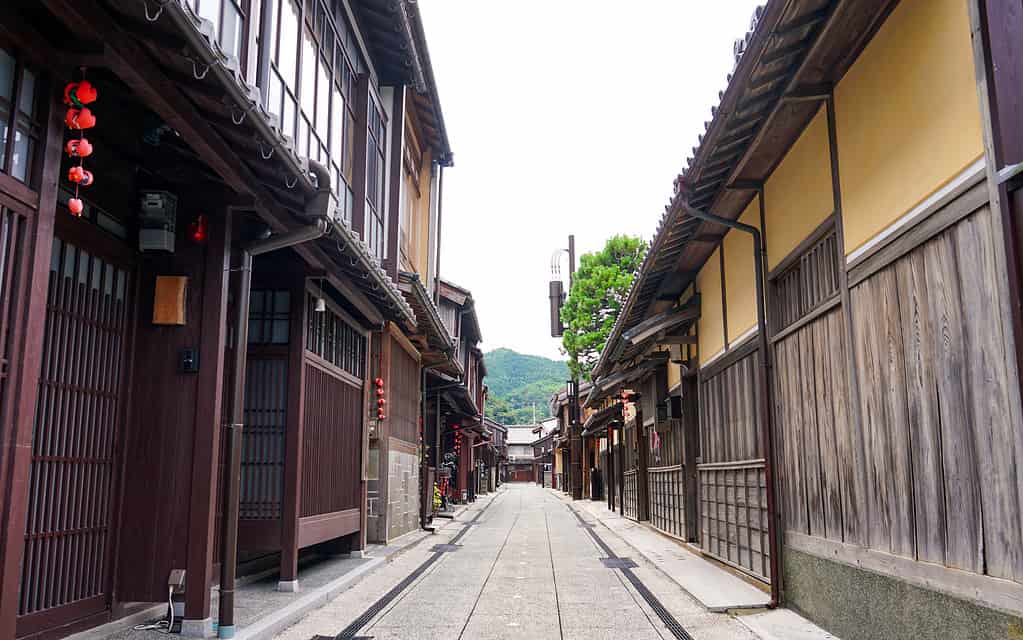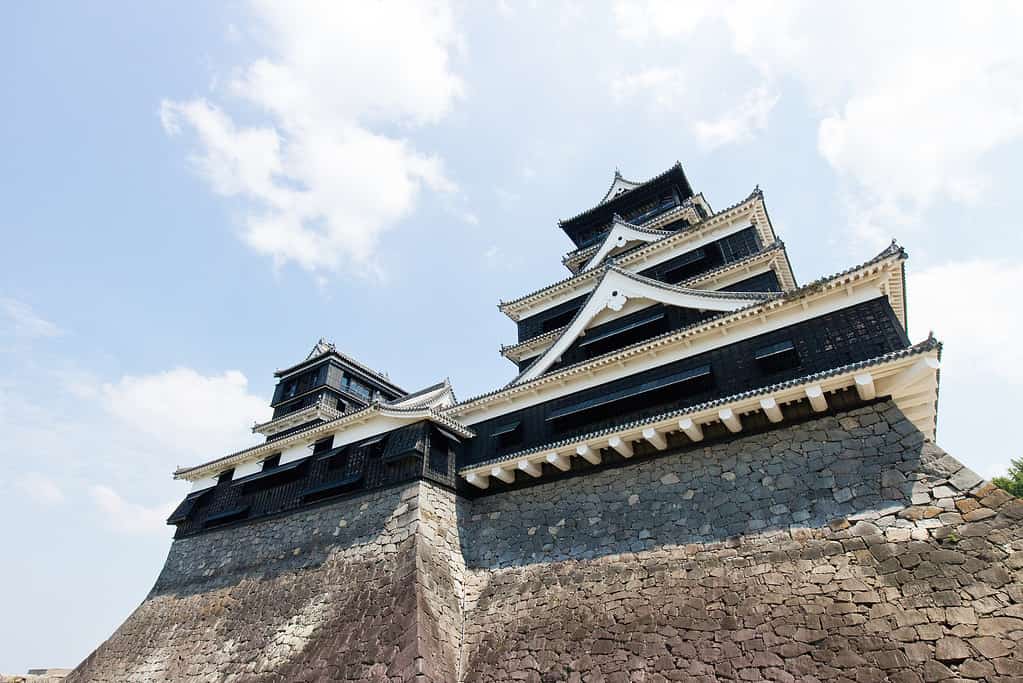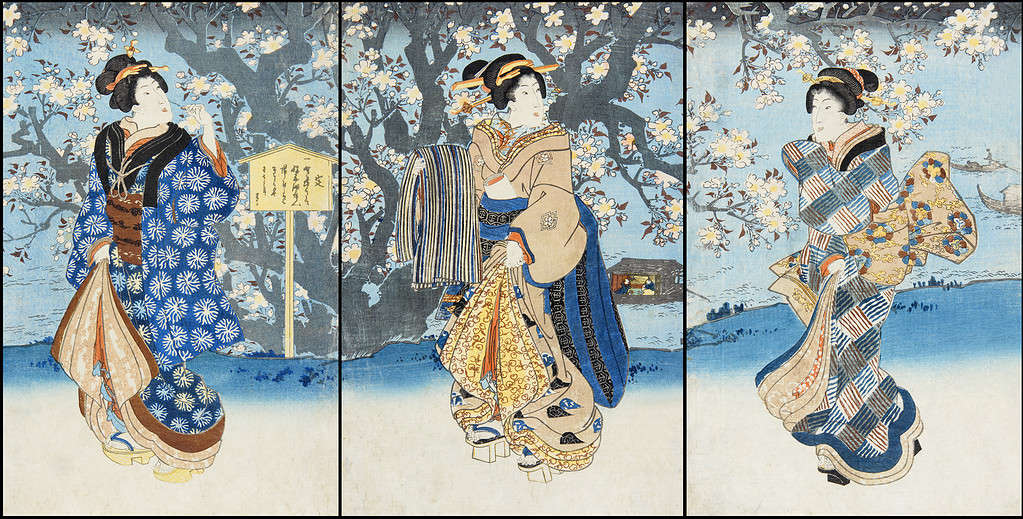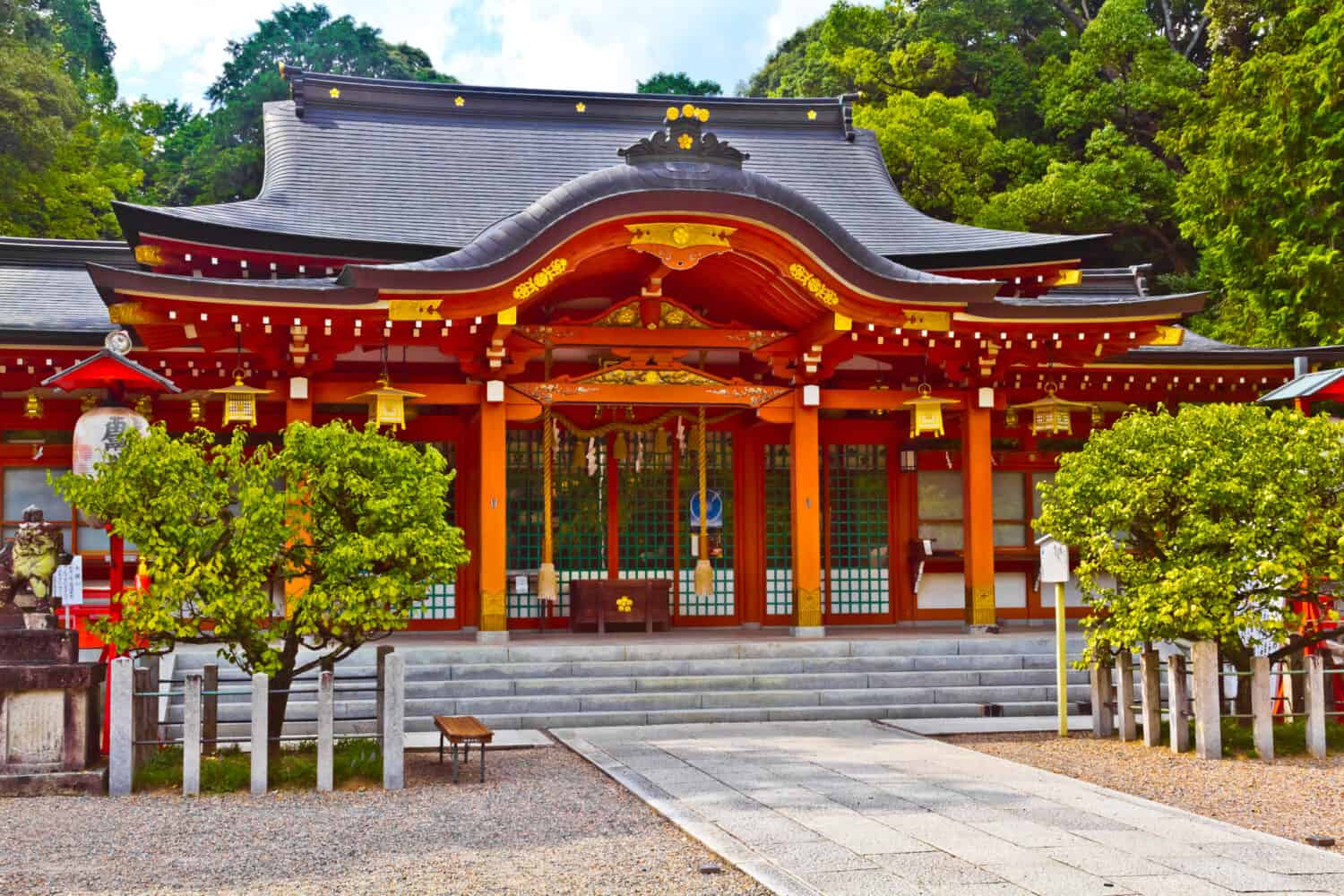Medieval Japan — characterized by a combination of feudal lords, warring clans, and political prowess, dissipated with the end of the Azuchi-Momoyama period. As Japan moved into the Edo period, politics, military regimes, religion, and culture would see a significant upheaval. Life in Japan changed drastically — and many of the most important places from the period still have landmarks in present-day Tokyo.
Keep reading to learn more about the interesting Edo period — including how it came to start, the most significant events, and important sites still tourable today.
History of the Edo Period

Edo brought a delicate peace to the country of Japan.
©Yue_/iStock via Getty Images
After the Onin War of the 1460s and 1470s, Japan turned into a bloody Sengoku period that ravaged most of the country. Amid those civil wars, three major samurai stood out from the crowd — but only one of those three had the power to unify the people. Enter: Tokugawa Ieyasu.
The Edo period of Japan stretches between the earliest years of the 1600s to the latter half of the 1800s.
Politics
Did you know that Edo is the name of what is now modern-day Tokyo?
Tokugawa Ieyasu’s former lord was Oda Nobunaga, who you may remember from the end of the Muromachi period of Japan. Ieyasu is known as one of Japan’s “great unifiers” and ruled Japan under the emperor but above hundreds of regional daimyo. The shogunate named after him, the Tokugawa Shogunate, ruled until the end of the Edo period and was the last shogunate of Japan. How did the power stay with one clan for so long? After centuries of backstabbing, betrayal, and political subterfuge, Ieyasu knew he needed to maintain absolute power by striking a balance of keeping allies close and enforcing a strict feudal system.
Amid the Tokugawa Shogunate’s rule, officials learned from previous rulers’ mistakes and shifted rules and regulations, especially in Edo, to squelch any chance of rebellions or uprisings. He required daimyo to establish a secondary residence in Edo while keeping their family in their region. Daimyo also had to swear a sort of “fealty” to the shogun to show their respect and support.
Military
When it comes to premodern Japan, the Edo period went down in history as the most stable and peaceful time. Samurai (or bushi) remained Japan’s warriors but transitioned from laboring on the battlefields to the country’s ruling class. The once-fierce soldiers became a sort of civil administrator in the peaceful Edo period.
The now-centralized government relied on the daimyos to rule their regions according to laws set out by the shogun. Disobedience of any kind was met with the strictest punishment.
Religion
Unlike the samurai, who had a specific code of ethics to follow, the common person in Japan had the flexibility to choose their own beliefs. As such, Shintoism and Buddhism remained primary theologies in Edo Japan. Buddhism, specifically, was the “state faith,” or the shogun-accepted religion. However, Shinto, Confucianism, and other Buddhist beliefs intermingled during this period.
Interestingly, the major world religion Japan refused to acknowledge was Christianity. The Azuchi-Momoyama period saw the first Christian missionary — the Portuguese Jesuit Francis Xavier — but closed the shores of the country to any other foreigner attempting entry during the Edo period. While some minority Christians existed, the religion remained prohibited until 1873 (a few years into the Meiji period). Many Christians in the Edo period were systematically hunted down and persecuted.
Culture
Perhaps the most iconic of the Edo period was the culture it established in Japan that would lay the foundations for modern traditions. It created art and music that have also become some of the most revered in world history.
Before the shogun arrived, Edo was a small fishing village. After Tokugawa Ieyasu established his Bakufu there, it became a thriving and diverse hub of commerce. Before long, merchants lined the streets of the bustling period capital, selling wares for all sorts of budgets.
Art flourished in the form of woodblock art, Kabuki theater, jôruri, haiku poems, and even sushi. Today, at least one of these art forms exists in dozens of other cultures.
Significant Events During the Edo Period

When Japan closed itself to Western influence, it sacrificed decades of progress.
©Korekore/iStock via Getty Images
Even though Edo remained the most peaceful period in premodern Japan, significant events led to both the rise and the fall of the shogunate.
At the beginning of the period in the 1630s, the shogunate expelled all foreign influences from Japan, intent on purifying the shores and creating a period without Western influences. Known as sakokou, this isolation would last until the end of the period. It left one small port open in Nagasaki Island, and only to traders from the Netherlands. English, American, Chinese, Portuguese, and all non-native Japanese are sent away and borders officially closed.
With the closing of the borders of Japan, the country missed some massive progressions from the rest of the world, including the collapse of the Ming dynasty, the start of the American Civil War, and the establishment of Canada and Mexico as independent nations.
The isolation was at least beneficial to Japan’s growth, doubling the country’s population from 15 million to 30 million in 100 years. The economy fared well too, with daimyo feeling pressure to increase productivity to make more money.
Entertainment districts began to pop up throughout castle towns, creating a hub of urbanization and unique culture for each region. Women mostly worked in deplorable conditions as entertainers and performers at theaters. This sort of work laid the foundation for geishas. At first in the Edo period, geishas served as assistants to oiran (luxury or high-class courtesans in the pleasure or entertainment districts) but customers became so enamored with the cheaper and more culturally-acceptable geishas that they took over the oiran’s popularity in a matter of years.
In 1853, the U.S. naval officer Matthew Perry entered Japanese waters as part of the Perry Expedition. When his warships arrived in Edo Bay, Edo locals were sent into a panic and the country’s isolationist policy began to unravel. This spelled the end of the Edo period, though many different factors contributed to the fall of Japan’s last shogunate.
Important Edo Period Sights To See Today in Japan

Despite the age of the castles, buildings, and streets, several great opportunities exist to step back in time to the Edo period in Japan.
©teddyleung/iStock via Getty Images
The Edo period in Japan was an incredibly influential two and a half centuries, taking the small island nation of Japan from a feudal and warring country to a powerhouse of art, culture, architecture, and commerce.
Anne Sutherland, a travel destination expert for Japan and the founder of Japan Travel Planning has traveled extensively in Japan. She lent her expertise to AZ Animals, citing her favorite Edo-period sites when she visits. “ I simply adore the Edo period,” said Sutherland, “with its peaceful vibes and a growth spurt in culture and cash, giving Japan lots of its marvelous spots and traditions.”
Edo Castle
While the Edo Castle has burnt down since its original construction in 1457, the castle ruins are tourable today and remain the residence of the Japanese Imperial family.
Today, the Edo Castle ruins include a massive moat, stone walls, a large plaza, gardens, gates, parks, and more. The inner grounds, where the current Japanese Imperial family lives, are not usually open to the public. It’s an accessible point of interest, as it’s a short 10-minute walk from Tokyo Station.
The grounds hold two tours a day (which only walk a path through the grounds and do not enter buildings) Tuesdays through Saturdays. The tours, given in both Japanese and English, take about an hour and 15 minutes. There is no cost associated with the tour, but you must pre-register for the tour.
Nikko Toshogu
Also known as Toshogu Shrine, Nikko Toshogu remains a splendid memorial to the shogun of the Edo period, Tokugawa Ieyasu. The gilded mausoleum, completed in 1617, pays homage to Tokugawa Ieyasu but has other ornamental buildings that were built for the spirits of Toyotomi Hideyoshi and Minamoto Yoritomo.
The sprawling land on which Nikko Toshogu lays has dozens of tourable sights, including a five-story pagoda, lavish storehouses, an ornamental gate, Ieyasu’s mausoleum, a garden and woods, a main shrine, large halls, a museum, and more.
To visit both the shrine and the adjacent museum, it will cost you 2100 yen (Just over $14 USD). You can reach the shrine and museum by first arriving at the Tobu and JR Nikko stations. Then, you’ll want to either take a bus (about 10 minutes) or walk (35 to 40 minutes) to the location.
Edo-Tokyo Museum

The Edo-Tokyo museum has
Ukiyoeprints and many other Edo-era exhibits when it’s open.
©m-ikeda/iStock via Getty Images
While it’s closed between 2022 and 2025 for significant renovations, the Edo-Tokyo Museum has become an important historical and educational landmark that chronicles the country’s history — especially during the Edo period. When it was open, there was a permanent immersive exhibit about living in the Edo period that offered dozens of photo opportunities.
Himeji Castle
Because the shogun wanted his daimyo to have two residences, they took up residence in one of the many castles of old or extinct families that lay empty. One such was Himeji Castle in Hyōgo Prefecture. Though built in the 1300s, the Edo period saw an expansion of Himeji Castle. It remains a massive structure with a hilltop location that is both a national treasure to Japan and a registered World Heritage Site.
Today, you can tour the keep and the adjacent baileys. Most choose to visit during cherry blossom season, as the flowering trees make for a stunning backdrop on the white-washed exterior and many floors of the castle. It costs 1050 yen (about $7 USD) to tour both the castle’s keep at the Kokoen Garden.
Nakasendo Trail
Nakasendo is one of the five routes from the Edo period. These five routes were central roads or ancient “highways” that connected Edo to the rest of the country. A guided walking trail now exists, along with actual stops along the way. These “post towns” have endured for centuries, and each is special in its own way. Sutherland and her family walked parts of the Nakasendo, thanks to her husband’s passion for Edo history. “I have a story from a personal trek, kindled by my hubby’s love for history,” she started.
“We were on a mission to feel the Edo period’s heartbeat and stumbled upon some lesser-known but age-soaked spots. Narai is one of them, a buzzing stop nestled right in the middle of Nakasendo, with a vibe that zips you back to the Edo days. The calmness there tells tales of a slower, chiller time. Taking a different route, Oiwake sits where the Hokkoku Kaido highway meets Nakasendo. It’s where old times meet new, watching the march of time like a quiet old guard.”
Tokaido Coastal Highway
Also part of the Edo period’s five routes was the Tokaido Coastal Highway, which connected Edo with Kyoto and later, Osaka. Many historians believe this to be the most important of all five routes. The name “Tokaido” roughly translates to “the eastern sea road” and Shizuoka Prefecture’s winding Pacific coastline.
Sutherland and her family visited this route in addition to the Nakasendo trail. “Tokaido coastal highway, the charming town of Seki opens its arms. With over 200 old houses, it’s like an open-air museum. Each house dishes out stories of the Edo period’s neat — yet deep architectural — style.”
Zenkoji Temple
While it was first built in the seventh century, the Zenkoji Temple was last rebuilt during the Edo period in 1707. The temple is a fascinating shrine, built to house the first Buddhist statue brought into Japan. Obviously, the statue does not sit in the shrine for daily public viewing. Instead, officials have hidden the real statue and bring out a copy of it every six years for tourists to see and pray near. The next time the copy will be brought out into the temple is 2028.
While the Sutherlands didn’t get to see the statue, they enjoyed marveling at the storied history within its walls.
“[We’ve also visited] a hot spot for pilgrims back in the day on their soul-searching trip to the Zenkoji Temple. It feels like leafing through an old, cherished book, each nook spilling stories of faith and adventures under the Edo sky.”
Getting to the Zenkoji Temple is fairly easy; it’s a 10-minute bus ride, 30-minute walk, or four-minute train ride depending on where you’re coming from. The entrance fee is minimal; about 600 yen or just over $4 USD to tour the inner chamber, underground passage, and history museum of the temple.
Hizen Hama

Touring Hizen Hama inspires thoughts of the massive processions that came through the town during the Edo period.
©jaimax/iStock via Getty Images
With the shogunate’s requirement for daimyos to live in the capital city every other year, massive processions on the five routes lent themselves to prosperous, hospitable towns. On the Sakagura-dori, one of the roads, Hizen Hama came alive with over a dozen sake breweries to “whet the whistle” of weary travelers on their way to the capital city.
“The leisurely walk through Hizen Hama is like a walk down memory lane. It used to be “hoppin’,” thanks to its sake and soy sauce brewhouses. Now, it’s a peek into the past. The white walls on Sakagura-dori are silent storytellers of a time when traditions brewed alongside sake.”
Japan Joins the Rest of the World at the End of Edo
When foreigners came to Edo Bay at the end of the period, the Japanese realized their isolation had set their still-flourishing country back by several decades. Exacerbated by a number of factors, the fall of the Edo period and the traditional Japanese government made way for the Meiji period. Japan soon became more than just an island nation largely isolated from the rest of the world — it played a massive part in international politics starting at the end of the 1800s.
Thank you for reading! Have some feedback for us? Contact the AZ Animals editorial team.








